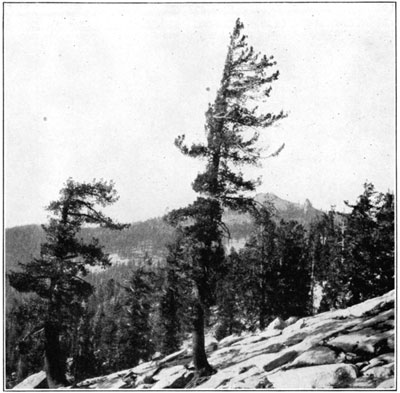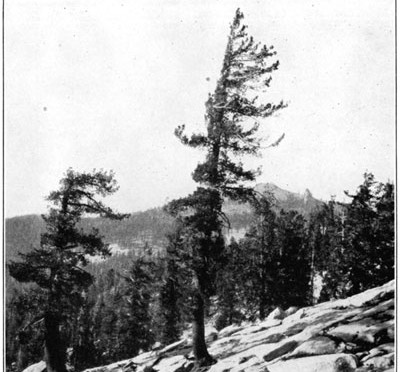Forests of Crater Lake National Park
Western White Pine (Pinus Monticola)
Besides the yellow and sugar pine that have already been noted there will be found among the firs and hemlocks, well up in the park, another handsome pine, with a clear, round trunk and reddish-brown bark, broken up into small square blocks. This is the western white pine (Pinus monticola), a very close relative of the famous white pine of the East. Western white pine (fig. 15) in heavy forests is a massive tree that has a straight, slightly tapering trunk, and usually a narrow, open crown. Its blue-green needles, like those of sugar pine, are found in clusters of five, and the slender cones, from 6 to 12 inches long, occur mainly on the tips of the pendulous branches.

Fig. 15—Western white pine (Pinus monticola). Diameter, 24 inches; height, 50 feet.
This pine, as its name indicates, is a mountain-loving tree. It is scattered widely in the Cascades and the Sierra Nevadas, and in northern Idaho and Montana forms immense forests of great value.
In the Crater Lake region it is most abundant at elevations slightly over 6,000 feet, but also extends down to about 5,000 feet on the western and 5,500 feet on the Klamath slopes. Especially fine white pines occur about one-half mile or so above the superintendent’s lodge, along the road that winds from the head of Anna Creek, up the outer slopes of Mount Mazama, to the crater rim. Here it can be recognized easily by its checkered bark, feathery crown, and pendant cones at the ends of the limbs.
Other pages in this section
*** previous title *** --- *** next title ***


